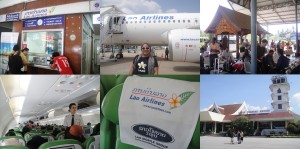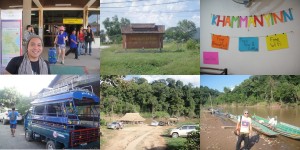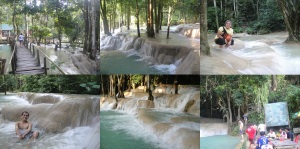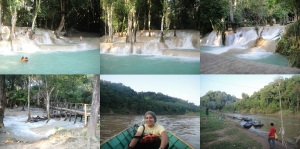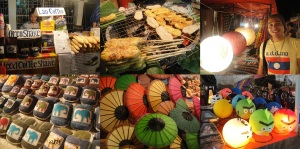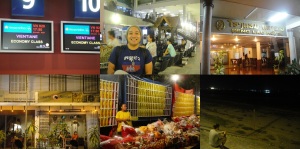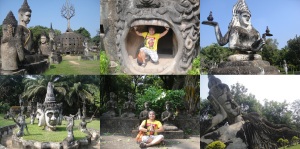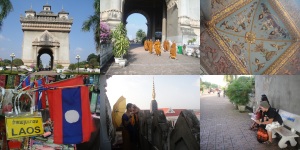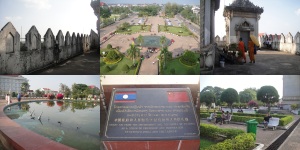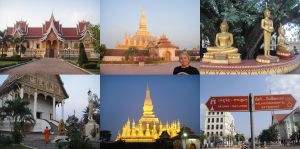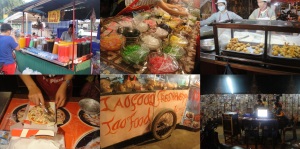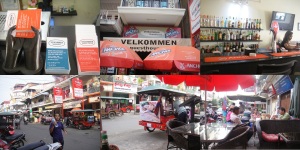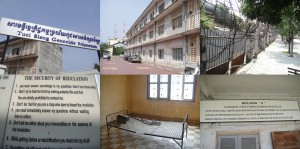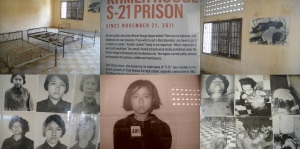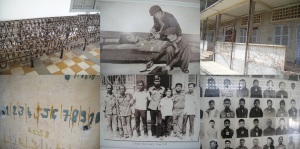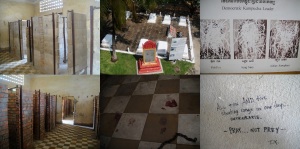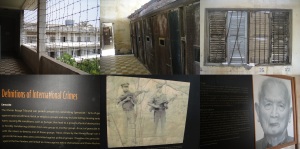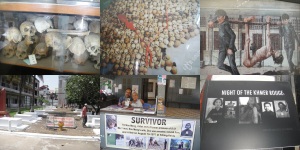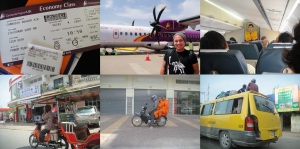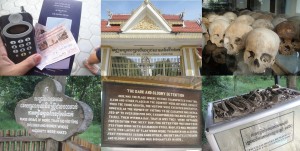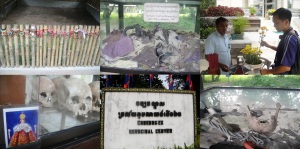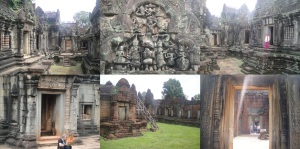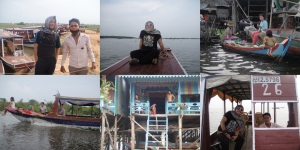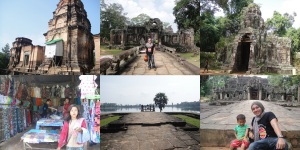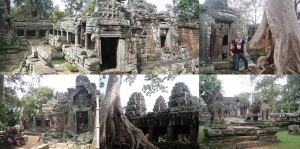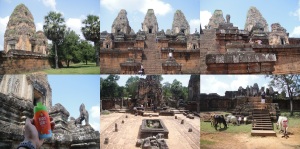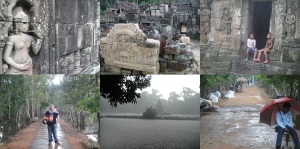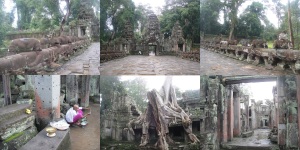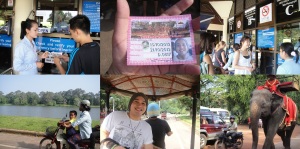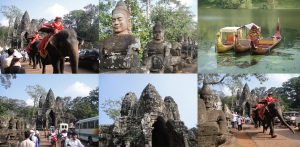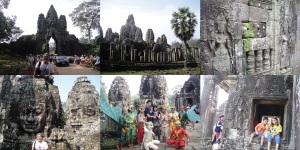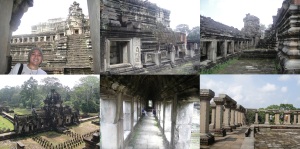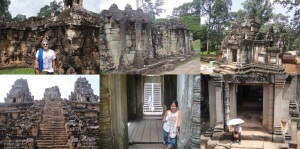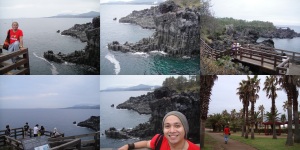We had a mid-morning flight to Luang Prabang, so after breakfast, I had the hotel call a taxi for me to drive us to the airport. We arrived at Luang Prabang around 10AM and there were a number of flights arriving that we were at the baggage carousel for about 30 minutes. I guess Luang Prabang is the more popular destination compared to Vientiane. Good thing we didn’t have to go through immigration anymore since we were coming from Vientiane (the immigration line was seriously crazy long). Our driver was waiting for us outside to take us to our hostel, which was the Khammany Inn, located about half an hour from the Luang Prabang International Airport.
My first impression of Luang Prabang was, just like Vientiane, scorching hot during that time. The feel of Luang Prabang is somewhat different than Vientiane though. It didn’t feel like a city to me, more of a vacation getaway in the province. It has been mentioned by many bloggers and people online that Luang Prabang is definitely a must-visit place in Laos, even recommending to skip Vientiane and go to Luang Prabang instead. Luang Prabang is the former capital of Laos and is now a UNESCO World Heritage city and with all the stuff I’ve been hearing, I was very excited to explore this place.
We arrived at the Khammany Inn around 11AM and I was glad they let us check in earlier than the usual 2PM check-in time, which gave us some time to freshen ourselves up and go to our destination that day. We decided to visit the popular Tad Sae Waterfalls. We had the hostel contact a tuktuk driver to bring us to Tad Sae and after some haggling and begging for a discount, we were on our way. It took us about 45 minutes to arrive at Ban Aen, a peaceful Lao village that’s just about a kilometer away from the center of Luang Prabang. Our driver dropped us at the car park and instructed us to walk ahead and so we did. We then reached the river where there were a number of boats available to take us to Tad Sae. The boat ride to Tade Sae was just quick, about seven minutes and once we got there, we paid the entrance and went ahead to explore the place.
I was seriously not prepared as to how BEAUTIFUL that place was! The waterfalls were so beautiful I felt like I was inside a postcard. My biggest regret that time was that I did not bring any extra clothes with me and I really, really wanted to swim there. My intention was just to take some snapshots of the place and silly me wore some pants and a pair of rubber shoes. Sorry, I was lacking some sleep and it definitely affected my train of thought that time. Thinking about it is still pissing me off. My brother ended up swimming there instead.
Unlike the usual waterfalls, Tad Sae Waterfalls features a wide, multi-level cascade pools of waterfalls and there is no single long-drop centerpiece (like the ones we are used to). The place is divided between the swimming area and the elephant ride area. We didn’t get the chance to see and visit the elephant area since we were enjoying the beauty of the waterfalls and my brother was having a great time swimming there. The place is perfect for a weekend getaway but we were there for just a quick stop, probably about a couple of hours only since we had to drive back all the way to Luang Prabang after that. I was surprised to see that there were not a lot of tourists visiting the place. I think I only saw two of them there aside from us. Most of the people visiting are actually locals or coming from the other provinces. We had a great time enjoying the waterfalls that our boat driver had to come and get us to inform us that we needed to go since the area is going to be closing already (that was around 5PM). We took the same boat ride back to the Ban Aen village and walked back to our tuktuk driver who was waiting for us to drive us back to the hostel.
After freshening up (it was already around 7PM), we decided to walk around the place to familiarize ourselve with the area. We ended up at the popular Luang Prabang Night Market located on Sisavangvong Road. The food stalls that welcomes you as you enter the night market is one of my favorite parts there. I had a great time chomping and munching on the food choices available while walking around the market area, trying to shop for some souvenirs. What I really liked about Laos is the fact that their hawkers and vendors there are very pleasant to deal with and definitely not as pushy as those in Bangkok, Hong Kong and even in Cambodia. And this is seriously the cheapest of them all. I told myself that I shouldn’t buy so many stuff since we still have another day there but I ended up buying a lot of stuff anyway. I just couldn’t resist the cool t-shirt designs and those fisherman pants and all the cute knick-knacks they have there. The fact that they’re so cheap added fuel to the fire. The market closes around 10PM, so we walked back to the hostel to get some rest before exploring the city again the next day.
Follow @iamthegarysia